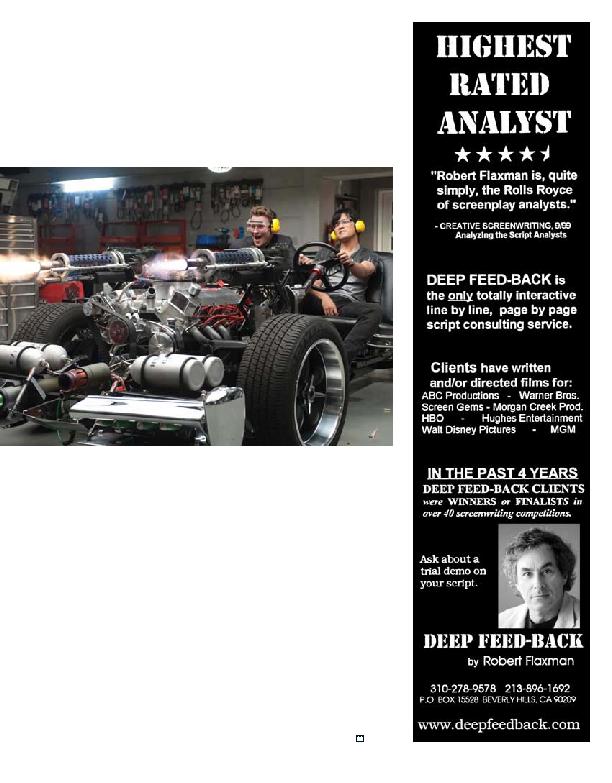
all about Seth and James Franco. In The
Green Hornet, the story is really all about Jay
and Seth, but Christoph Waltz has his own
plot and his own story." They stress that
their villain, Chudnofsky, isn't just someone
for the Green Hornet and Kato to fight but
a fleshed-out character with his own growth
and story arc. Much as Britt Reid is the reg-
ular guy who becomes a superhero, Chud-
gangster who becomes a supervillain. "In
the end, the audience doesn't want to see
the Green Hornet battling a dude with a gun
who's totally normal," Goldberg says. "They
want some kind of escalation."
Joker in The Dark Knight, the bar had become
significantly higher for superhero movie vil-
lains. "We felt that we had to up our game a lit-
tle bit," Rogen says, "and make it something
interesting and unique." Rogen and Goldberg
also make the observation that in The Dark
Knight, the Joker comes out of nowhere, lacks
an origin story and has no arc whatsoever.
Normally, this would be the antithesis of a
strong antagonist, "but they really did a lot
with it," Rogen points out. "So we really had to
make our villain memorable and awesome."
ous Green Hornet
notes, "we realized, `What's the best thing
about the Green Hornet?' It's that Kato's the
real superpower, shall we say, and Britt Reid
is just a [regular guy]. We needed someone
who was not a hero. And that," he says, "is
Seth's forte. It allows us to build from square
one up to `heroic,' which makes it the most
emotionally satisfying for the audience."
another, are already a few steps down the su-
perhero path. In Iron Man, for example,
Tony Stark is a genius billionaire with a
weapons-manufacturing empire at his beck
and call. Spider-Man's Peter Parker is a char-
acter whose instincts always guide him to-
ward being a good guy. "We wanted to
deconstruct all that," Rogen explains, so
they began with a character who physically
and emotionally was almost incapable of
doing anything for others, let alone per-
forming actual heroic acts.
ple still enjoy older superheroes like the
Green Hornet. "I think what is appealing
about pulp heroes is that most of them don't
have any superpowers," he says, "which just
makes it seem that much more obtainable. It
just makes it that much easier for the aver-
age person at home to think, `Hey, I could
do that.' It's easy to relate to a guy who
builds a car with machine guns."